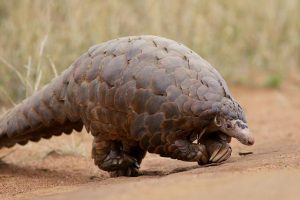
Where Did Covid-19 Come From?
Scientific studies around the world are exploring the pangolin, a mammal also called the scaly anteater, as the possible intermediate carrier of the SARS-CoV-2 virus. These studies suggest that bat and pangolin coronaviruses recombined at some point to form the virus that became SARS-CoV-2. Bats still appear to be the original host, but pangolins are the likeliest intermediate vector, and may be more infectious to humans than bats.
Pangolin meat is considered a delicacy by some in China and Vietnam, and their scales and fetuses are used in African and Chinese traditional medicine to treat a range of ailments. They are very hard to raise in captivity. They are seldom seen in the wild because they are nocturnal animals that sleep during the day in their burrows. Poachers catch them by using smoke in their burrows. Whole families of pangolins will then emerge and instinctively curl up into a ball for protection, which makes them easy to gather up. They are transported to China live by hanging them by their feet. All 8 pangolin species are protected from international trade.
Pangolins “have high pathogen loads and carry parasites, like ticks. They are also massively stressed, malnourished and dehydrated when in trade, said Peter Knights of conservation organization WildAid. “…if current levels of illegal trade continue they could be a vector for another new disease…” He urged the closing of all live wildlife markets around the world.
Why do the origins of the pandemic matter? The majority of known emerging infectious diseases, especially viruses, are of animal origin. The proportion of those emerging from wildlife hosts has increased substantially over the last four decades. “Detailed understanding of how an animal virus jumped species boundaries to infect humans so productively will help in the prevention of future zoonotic events,” a paper published in Nature Medicine concluded.
